Phrygia; It is a very large geography covering certain parts of Eskişehir, Afyonkarahisar, Kütahya and Ankara provinces. It is one of the most impressive civilizations of Anatolia with its walking paths, Phrygian artifacts, valleys, castles, temples, legends and stories. Since Phrygia is spread over a very wide geography, it is ideal to travel by dividing it into parts. In this article, it is located within the borders of Eskişehir province and Yazilikaya Valley or a Midas Valley so-called Eskişehir Phrygian route You will find detailed information about, have a pleasant reading!
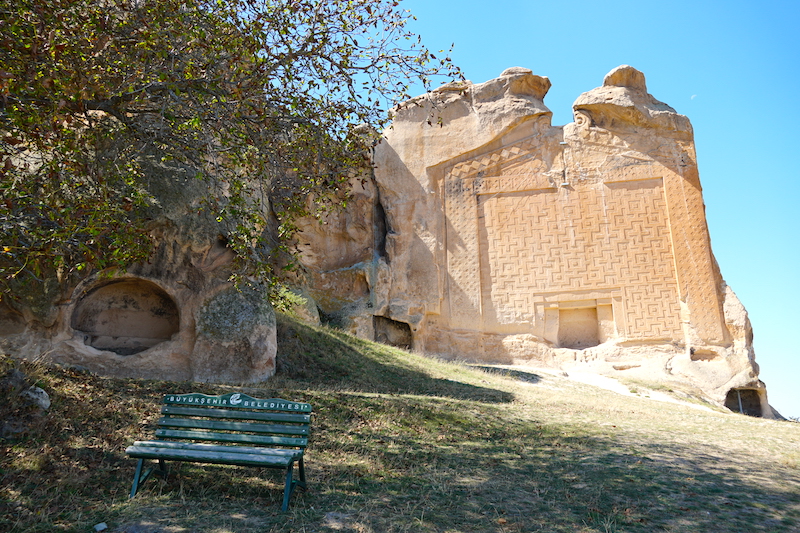
For other Phrygian routes Phrygia places to visit Be sure to check out my post.
Eskişehir Phrygian Route – Where is Yazılıkaya Valley?
Phrygia is a civilization spread over a wide area covering different provinces. It is possible to come across Phrygian ruins in many valleys known as the Phrygian Valleys within the provincial borders of Eskişehir, Afyonkarahisar, Kütahya and Ankara. In this article, you will find details about Yazılıkaya Valley, located within the borders of Eskişehir's Han district.

Yazılıkaya Valley is located at a point between Eskişehir and Afyonkarahisar, between fertile plains, large and small hills, and volcanic rock structures. The valley is within the borders of Yazılıkaya Village in the Han district of Eskişehir.
- Yazılıkaya Valley is 71 km from Eskişehir center,
- Yazilikaya Valley is 63 km from Afyonkarahisar center,
- Yazılıkaya Valley is 93 km from the center of Kütahya,
- Yazilikaya Valley is 230 km from Ankara,
- Yazilikaya Valley is 372 km from Istanbul.
On the Google Maps application of Yazılıkaya Valley, where Yazılıkaya Monument is located, Click for location.
How to Go to Eskişehir Phrygia Route?
Unfortunately, the most difficult part of visiting Phrygia is that it is a bit difficult to reach by public transport. When you want to go with your private vehicle, you can find your way when you mark the Yazılıkaya Monument. However, if you want to go by public transport, you can take the minibuses from Eskişehir bus station to Han district, and after the Han, you can only reach the valley by hitchhiking. You will definitely need a vehicle for the places to see in the valley.
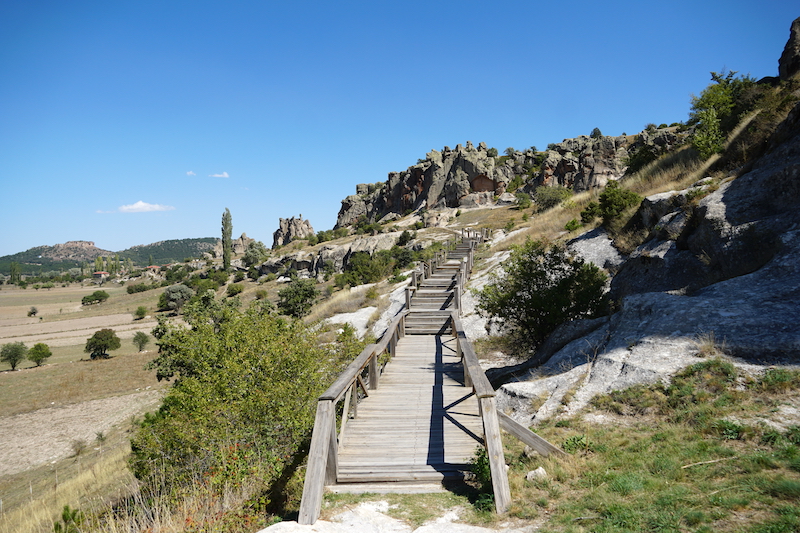
If you do not have your own vehicle; After coming to the center of Eskişehir or Afyonkarahisar by train or bus from cities such as Istanbul, Ankara, it is the most logical method to visit the region by renting a car from the center.
Let me give you good news about the Eskişehir Phrygian route. In the autumn of 2022, bus services will start from the center of Eskişehir (probably from Odunpazarı) directly to Yazılıkaya Monument. For the latest situation, you can follow the announcements on the website of Eskişehir Municipality.
To see Yazılıkaya Valley; While going on holiday from Istanbul to Antalya or Fethiye with your private vehicle, you can visit Yazılıkaya Valley via Eskişehir to beautify your route and turn this mysterious and legendary geography into a surprise for your holiday route.
Places to Visit on Eskişehir Phrygia Route
There are some places that I don't get tired of going many times. Phrygia, especially Yazılıkaya is one of these routes. I am preparing this article after my fourth visit to Yazılıkaya Valley. Now I think we can say that I have a say in this matter. I tried to explain the places to see in the Yazılıkaya Valley section of the Eskişehir Phrygian route one by one below. I've added the ones I went to and couldn't see as suggestions at the end of the list.
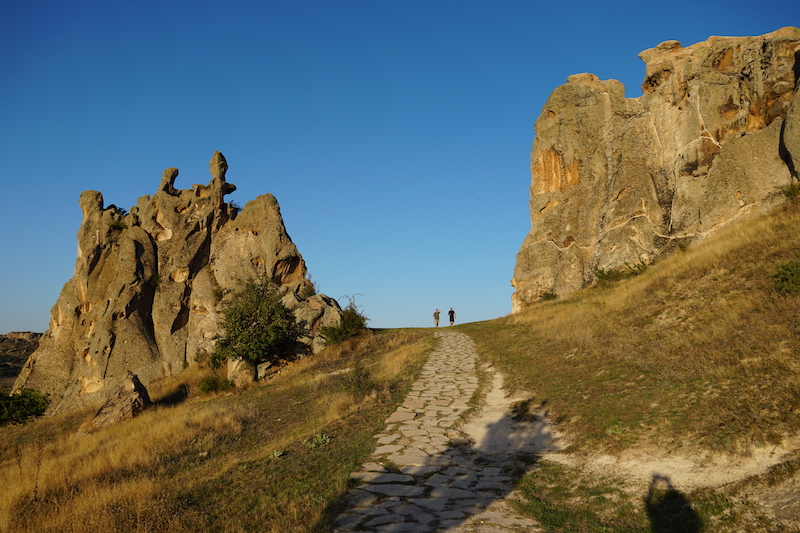
For Phrygians; Gordion, located in Ankara's Polatlı district, is the political center, the capital; Midas city was the religious center of the kingdom.. For this reason, there are many temples and castles, large and small, for observation rather than defense.
Yazilikaya Ruins – Midas City
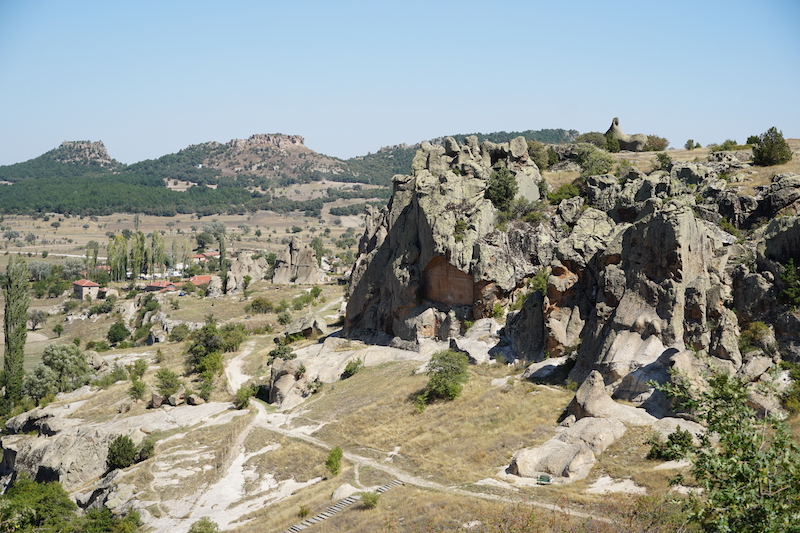
The entrance to Yazılıkaya Ruins, which is located within the borders of Yazılıkaya Village of the Han district of Eskişehir, and which includes the Midas City and Yazılıkaya Monument, is free for now. I am in favor of paying for valuable cultural heritages like Yazılıkaya, unfortunately our people do not appreciate when they are free. If there is a fee, maybe a budget will be provided for the preservation of the ruins. At the moment, the village headman acts as the guardian of the ruins, guiding and guiding the tourists. Thanks to a very sweet and caring person, but this job needs to be done more professionally.
Yazilikaya Ruins is on the UNESCO World Cultural Heritage tentative list. I hope it gets on the list permanently soon because it more than deserves it.
I will try to explain the places within the borders of Yazılıkaya Ruins one by one;
Yazilikaya Midas Monument
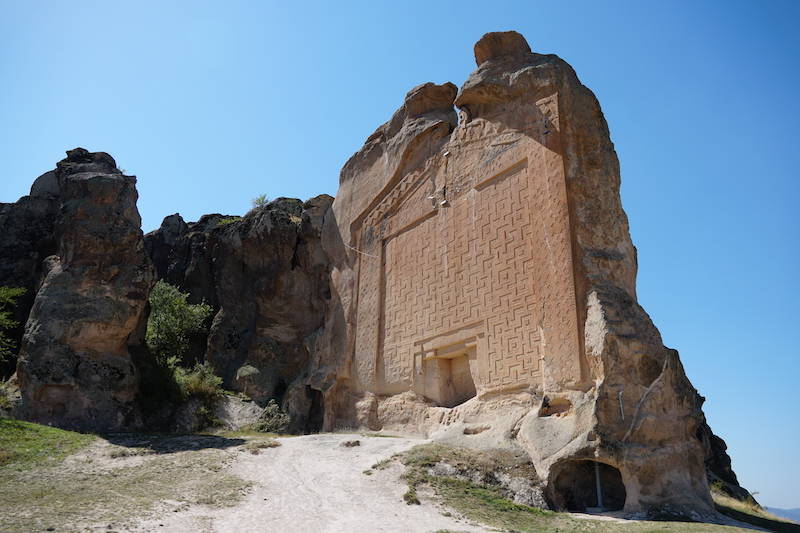
A magnificent monument, which is the symbol of Phrygians and Phrygia, Yazılıkaya Midas Monument. In addition to being the largest monolithic monument in Anatolia, it is one of the most important surviving works of the Phrygians. The geometric patterns on it are typical examples of Phrygian art. The meander motif on the monument is used as the symbol of the Phrygians.
This monument was only used a few times a year on special occasions. It is known that a Cybele statue was placed in the niche in the lower middle of the monument from the time of the ceremony. You can see the example of the Cybele statue in the Anatolian Civilizations Museum in Ankara. Those who see this magnificent monument of beauty and size also think that this niche is a door to another dimension. Looks like a solid Netflix series will come out of here...
Although the original name of the monument is Midas Monument, the local people named it Yazılıkaya because of the writings on it. Since there are very few written sources left from the Phrygians, their language is still not deciphered. Although some words could be read on the inscriptions on the pediment of the monument, the entire inscription could not be deciphered.
Midas City – Kırkgöz Cliffs
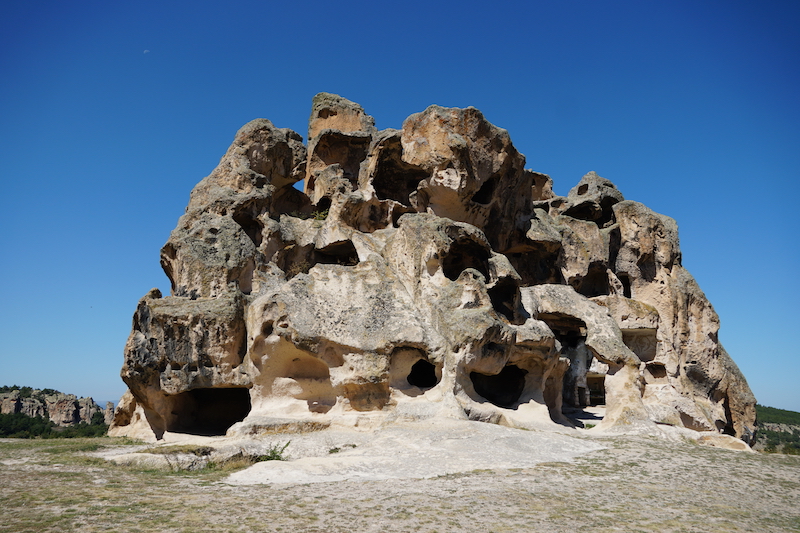
Right across the Yazılıkaya Monument, you will see a huge rock mass with lots of eyes on it. Those rocks are called Kırkgöz Rocks. These cliffs were used as multi-storey rock settlements, churches and tombs during the Hellenistic, Roman and Eastern Roman periods. Inside the rocks, there are stairs carved into the rocks that are used for transitions between spaces.
Since the rock structure of the region is tuff, it is easy to carve and dig, so there are many examples of large rock masses like this being used as castles, settlements or places of worship.
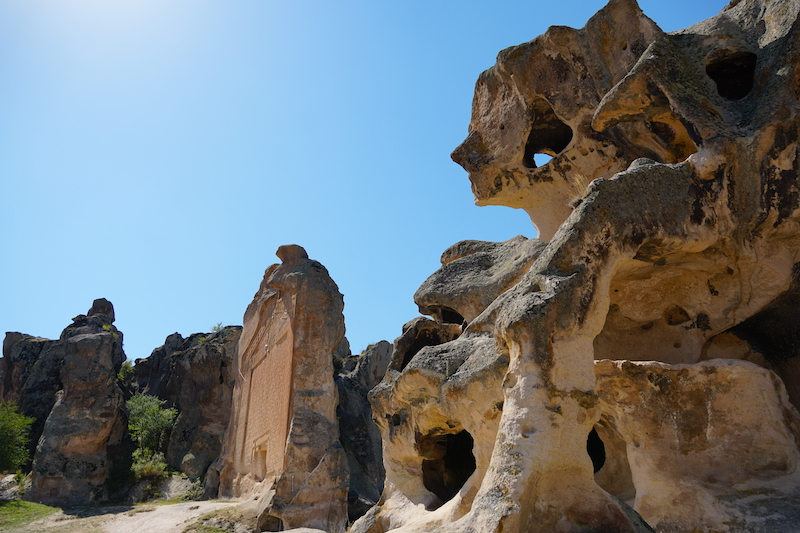
If you look towards Yazılıkaya Monument from Kırkgöz Cliffs, you will see the side silhouette of a human face above.
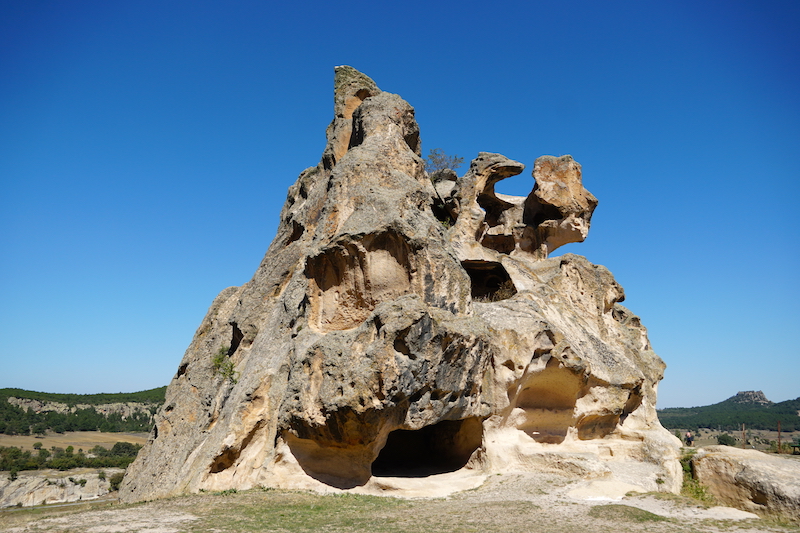
When you look towards Kırkgöz Cliffs from Yazılıkaya Monument, you will see a wolf's head in the middle. It's fun trying to find it while you're gone.
When you see Yazılıkaya Monument and Kırkgöz Cliffs, don't go back thinking that everything to see is over. To ascend the Yazılıkaya Plateau, where the upper city of Midas City is located; Follow the path with the Yazılıkaya Monument behind you. The path will make a full circle over the plateau and bring you back to where the monument is.
Midas City – Pyramid Rock and Rock Tombs
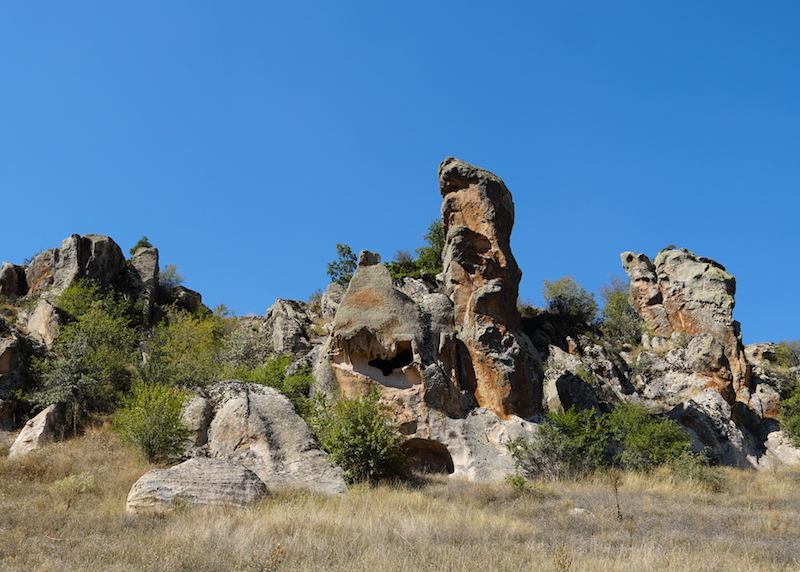
When you take the upper city to your right, you will start to see the remains of Midas City by following the path. The first stop on the path is Pyramid Kaya. It was given this name because its top was cut in the shape of a pyramid. Inside the pyramid roofed rock, there is a rock tomb.
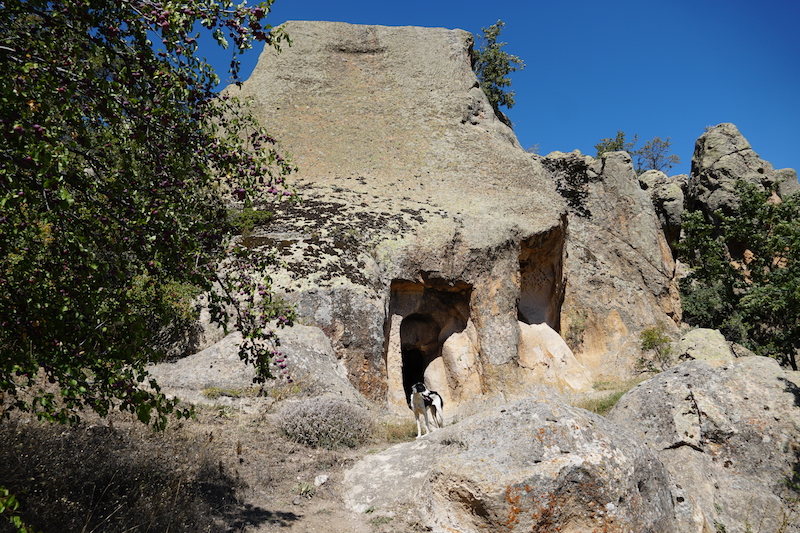
When you look carefully at the rocky area, you will see other rock tombs. You can enter the rock tomb whose photo you can see above.
Midas City – Ceremonial Road and Hittite-Phrygian Rock Reliefs
When you go a little further on the path, you will see a road with tire tracks. You have arrived at the entrance to Midas City. This road is the ceremonial road where religious ceremonies are held.
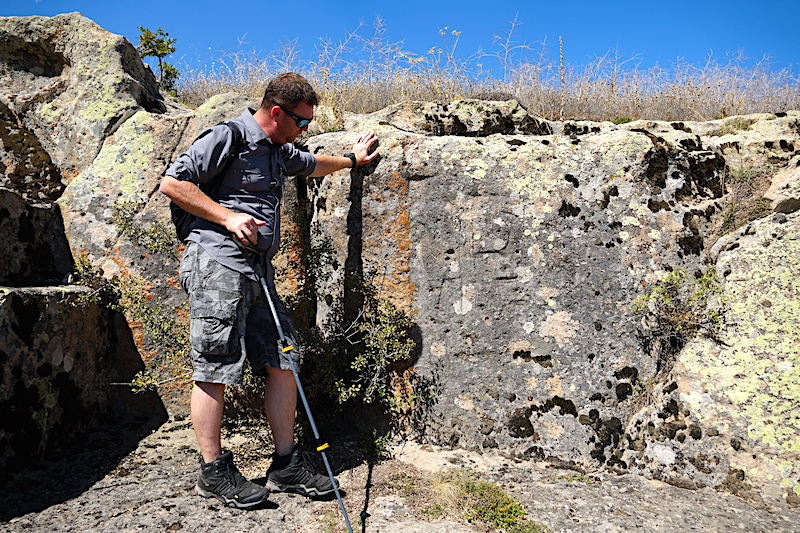
Along the Ceremonial Road, there are figures carved into the roadside cliffs. The most interesting of these figures is the Hittite Soldier embroidered relief. Thanks to this relief, we understand that the city was also used during the Hittites period.
Midas City – Inscribed Altar / Twin Idol Altar

At the end of the ceremonial path are two altars, one smaller and one larger. The altar (altar), photographed above, is one of the most beautiful of the Phrygian altars with its twin idols and three-stepped structure. Because of the inscriptions on it, it is known as the inscribed altar or the rock throne among the people.
Midas City – Midas Castle / Upper City

When we come to the part where the altars are, you are now in the upper city. From here you can watch the magnificent view of Yazılıkaya Valley, make the surrounding rocks look like various objects or just enjoy the silence. It is estimated that the city had castle walls during the Phrygian period, and that this was the Midas Castle.
Midas City – Water Cisterns
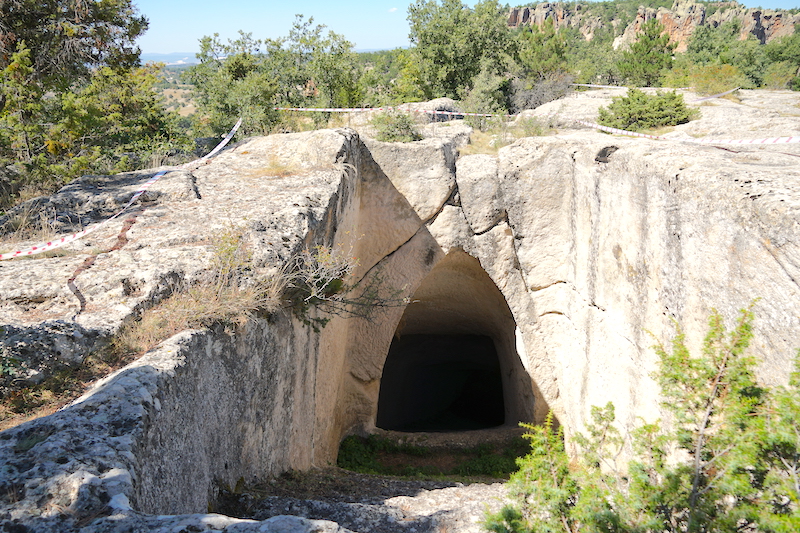
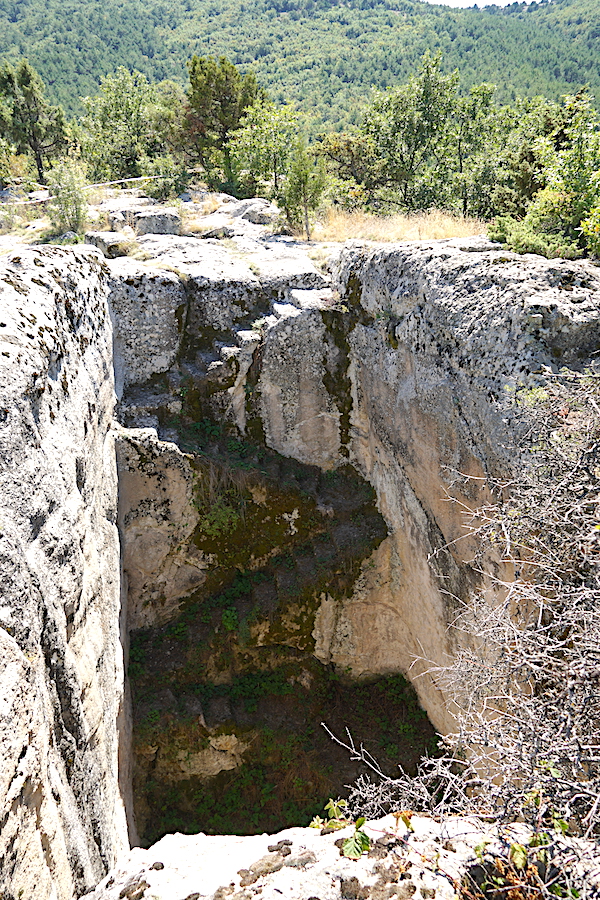

We can now start descending again by following the wooden stairs from the upper city. During the descent, two large cisterns will block your way. These cisterns were used both to collect water and to store food. You can enter from one of the cisterns and exit from the other, although it is a bit dark inside, it is passable.
On the way back, you will see another cistern (3rd photo). It is also a very impressive cistern with steep stairs used to store water.
Midas City – Unfinished Monument
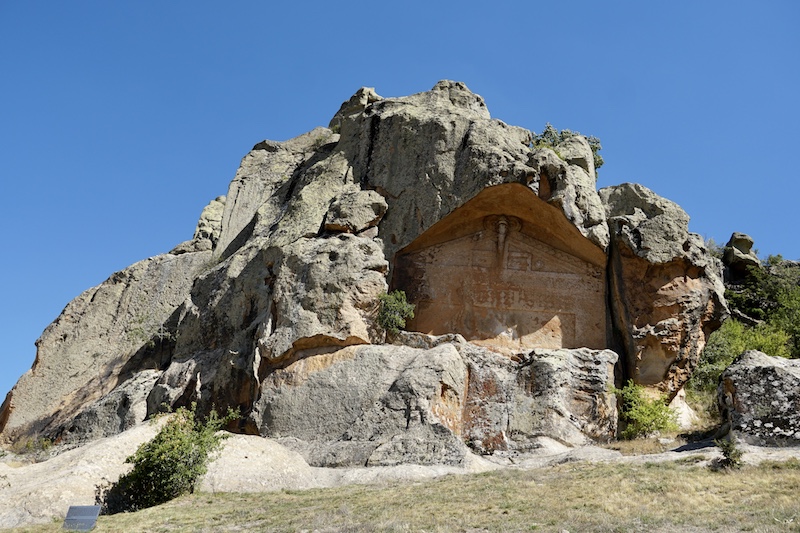
Another similar of Yazılıkaya Monument was started to be built in Midas City, but the city fell due to the Cimmerian attacks and the monument could not be completed. Especially the ram head on the monument is dazzling even after hundreds of years with its magnificent workmanship that can be seen clearly.
Together with the Unfinished Monument, we complete the Midas City. It's time to explore other Phrygian ruins in the surrounding area.
Çukurca Village – Gerdekkaya Grave Monument – Kizlar Monastery
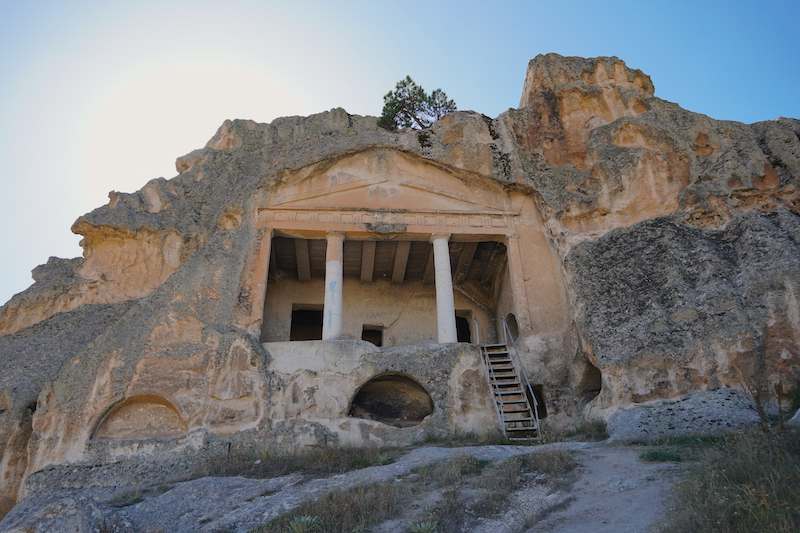
One of the most popular spots in Phrygia is the Gerdekkaya Tomb Monument, located in Çukurca Village. The triangular pediment of the tomb, carved into a large rock mass, is a typical example of Hellenistic architecture with the temple facade carried by 2 columns. The tomb, which is understood to have been built in the Hellenistic Age (3-1 century BC), reached its present form with some additions and arrangements during the Roman period. The building, which has two burial chambers entered through two separate doors, is known as the Girls' Monastery because it was used as a monastery for a period.
Çukurca Village – Doğanlı Castle
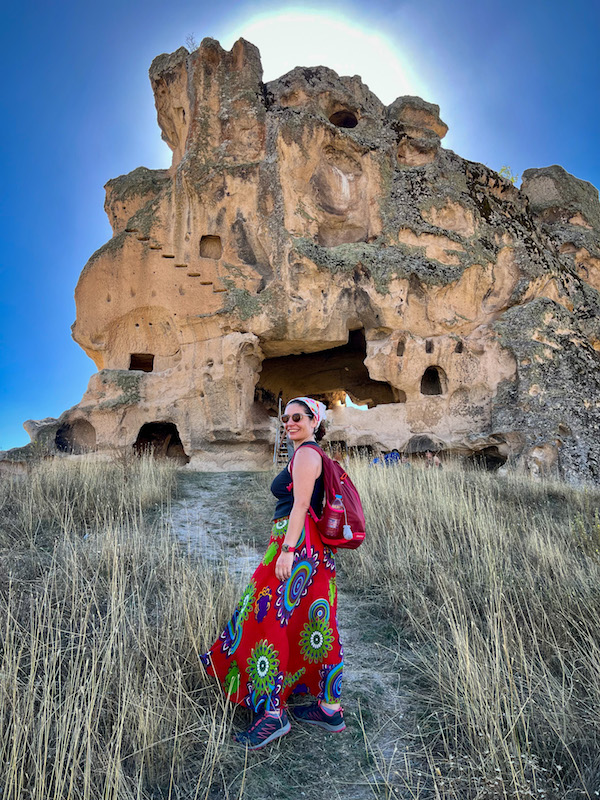
Doğanlı Kale, one of the observation castles in Yazılıkaya Valley, is located near Çukurca Village. Named Doğanlı Kale because of its resemblance to the head of a falcon when viewed from afar, the castle consists of seven separate floors carved into the rock. The nail image on its front shows what used to be a wooden ladder that went around the rock. The first floor of the castle, which has sections such as tombs, chapels, warehouses and cisterns, can be reached by stairs.
Küçük Yazılıkaya – Areyastis Monument – Hasanbey Rock
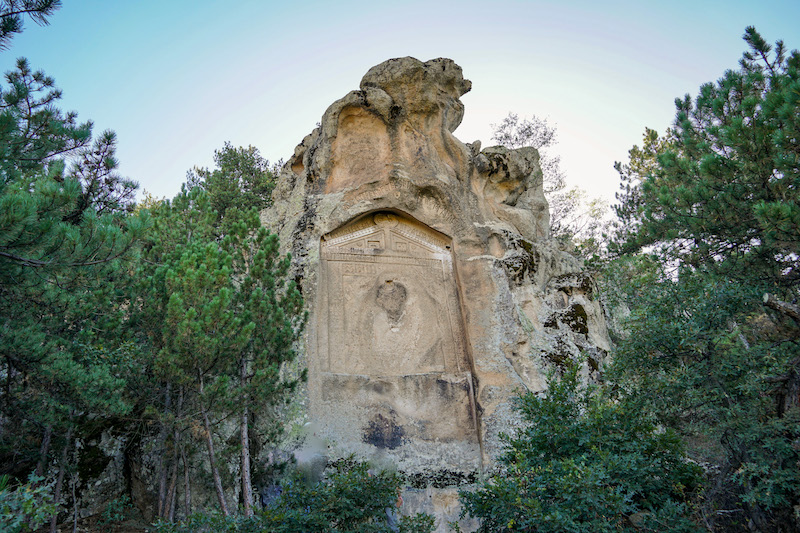
It's time for a monument called bol… Küçük Yazılıkaya, located between Çatalkaya and Yazılıkaya villages, is 130 meters inland from the main road, on the slope of a hill. The monument, which is 5.50 m high and 4.20 m wide, is important because it is the monument with the most inscriptions.
Kümbet Village – Phrygian Temples
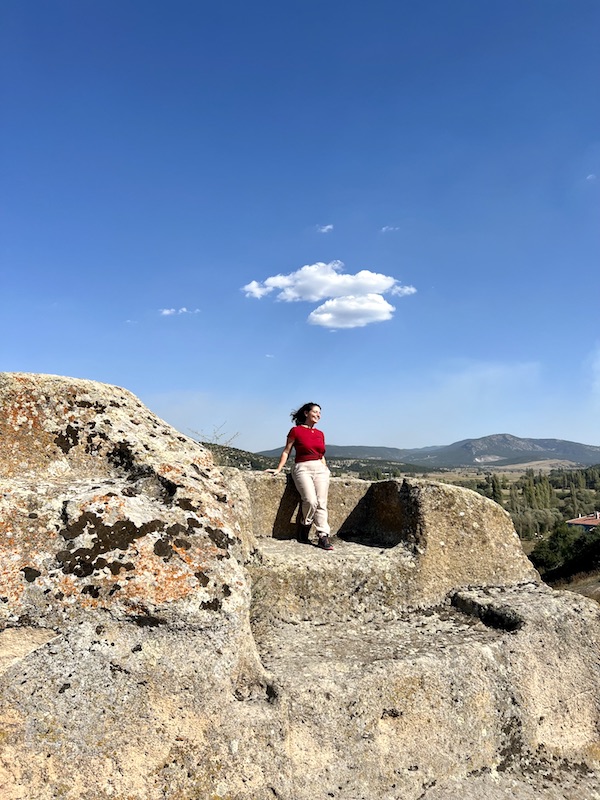
You will reach Kümbet Village when you continue 16 km west from Yazılıkaya Village. When you climb to the top of Kümbet Village, you will first encounter the Phrygian Temples carved into the rock formation. There are 3 types of temples in the Phrygians; Facade, niche and altar. The façade is the ones carved into the wall, the niches are the ones carved into the rock, and the altars are the altars made in the form of stairs. You will see temples made in the form of altars and niches in the tombs.
Kümbet Village – Tilki Rocks

The rocks on which the Phrygian temple was built were named Fox Rocks. From the top of these rocks, you can see a wonderful view of the Kümbet Valley.
Kümbet Village – Lion Temple & Solon's Tomb
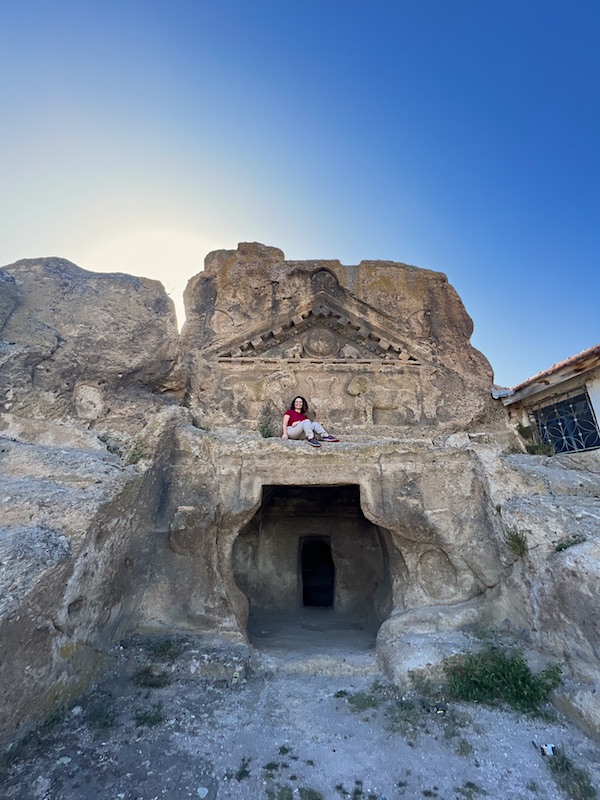
Although the first construction of the mausoleum, which is adjacent to the village houses, was in the Phrygian period, it is understood that it was later used in the Roman Period. Due to the male and female lion figures standing opposite each other on the pediment of the monument, the eagle above them and the helmet relief in the middle, it is estimated that this place belongs to a soldier. It is known as Solon's Tomb because of the "Solon" inscription found on the tomb.
Vault Village – Himmet Baba Vault
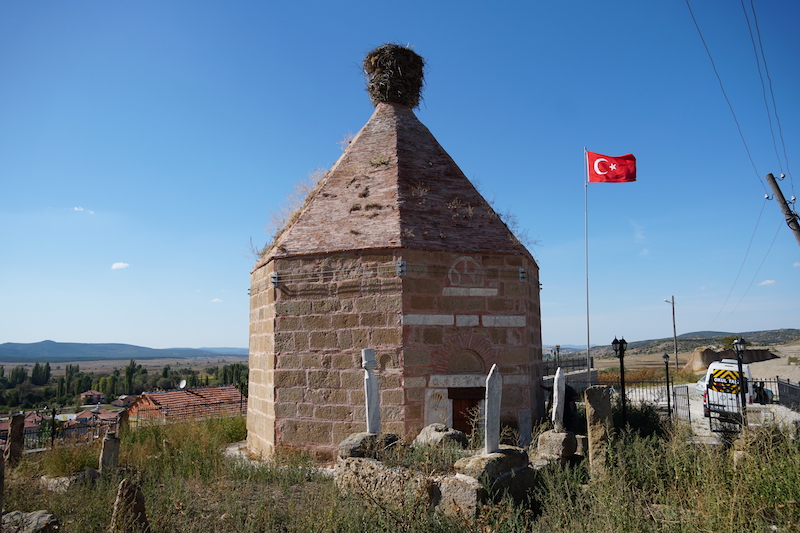
Cupola structures in the Seljuk tradition are the mausoleums or tombs of that period. It is seen that pieces from the Eastern Roman period were used in the construction of the cupola, which was made of cut stones. The cupola, which was built for a person named Himmet Baba, gave its name to the village where it is located.
Yapildak Village – Asar Kale
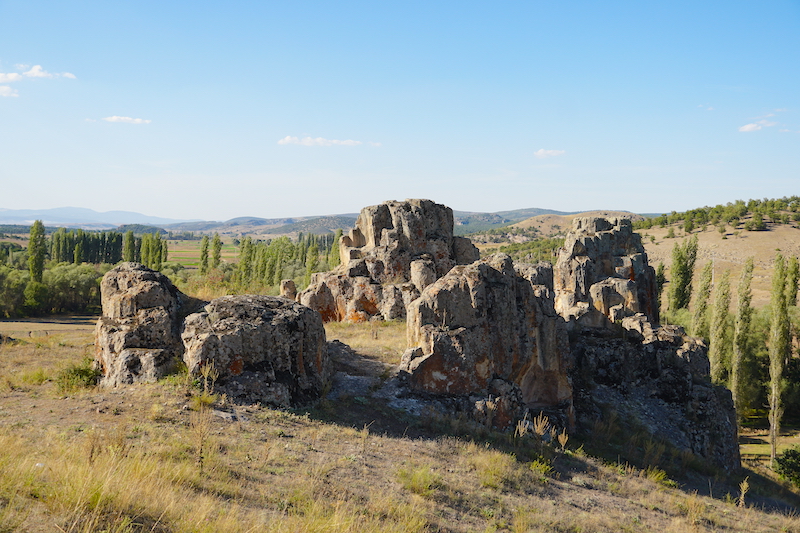
Asar Kale, one of the many castles used for observation purposes in the region, is 3 km from Kümbet Village. The castle, which was built on a rocky hill overlooking the mountain roads, was built by carving the rocks. The observation tower, which is reached by stairs, is still a great spot to observe the surroundings today.
There are many castles used for observation and protection in the region. The castles that I saw from afar but could not find time to visit, built to protect Yazılıkaya Valley; Kocabaş Castle, Baked Castle, Gökgöz Castle and Akpara Castle. If you have time, you can add it to your route.
List of Places to Visit on the Eskişehir Phrygian Route
- Midas City – Yazılıkaya Monument
- Midas City – Kırkgöz Cliffs
- Midas City – Pyramid Rock & Rock Tombs
- Midas City – Hittite-Phrygian Rock Reliefs
- Midas City – Ceremonial Road
- Midas City – Inscribed Altar
- Midas City – Midas Castle / Upper City
- Midas City – Water Cisterns
- Midas City – Unfinished Monument
- Cukurca Village – Gerdekkaya
- Cukurca Village – Doganli Castle
- Little Yazilikaya
- Kümbet Village – Phrygian Temples
- Kümbet Village – Tilki Rocks
- Kümbet Village – Lion Temple
- Vault Village – Himmet Baba Vault
- Asar Castle
- Kocabas Castle
- Baked Kale
- Gokgöz Castle
- Akpara Castle
Yazilikaya Valley Video
Eskişehir Phrygian route Yazılıkaya Valley video is on my Youtube channel, don't forget to watch, like and subscribe!
What to Eat and Where to Eat in Yazılıkaya Valley?
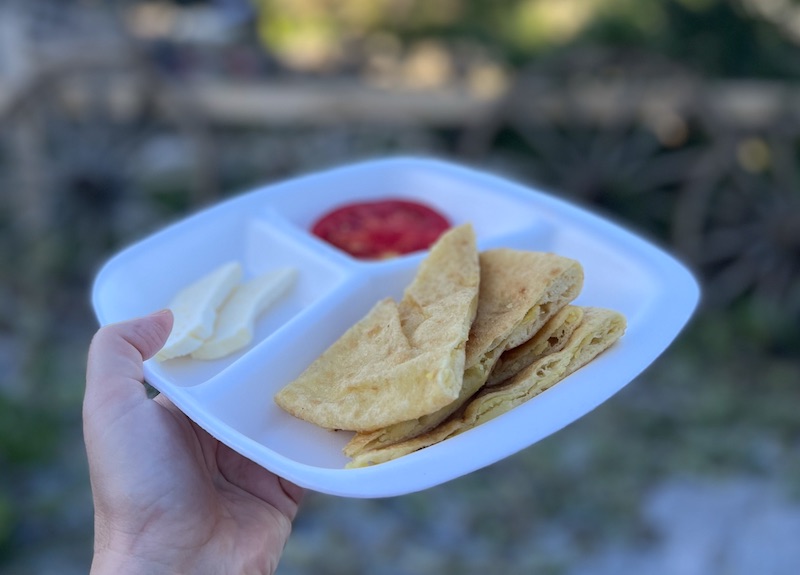
One of the most troublesome points of the Yazılıkaya route is the issue of eating and drinking.
There are two places to eat in the area;
- Passion Cafe: Tutkun Cafe serves in a stone building very close to Yazılıkaya Monument. It also has a large garden, where caravans or tents can be accommodated. Apart from tea and coffee, the only dish served is Hıçın, which is a kind of Circassian Pastry. It is made with potatoes and served with cheese and tomatoes.
- Midas Khan: Midas Han is a boutique hotel. You can also go to the hotel for outside food, tea-coffee or breakfast service.
Where to Stay in Yazılıkaya Valley?
If you are looking for a place to stay in Eskişehir Yazılıkaya Valley, now you have different options. Eskişehir Municipality, Han Municipality and Osmangazi University Tourism Department signed a home hostel project in cooperation.
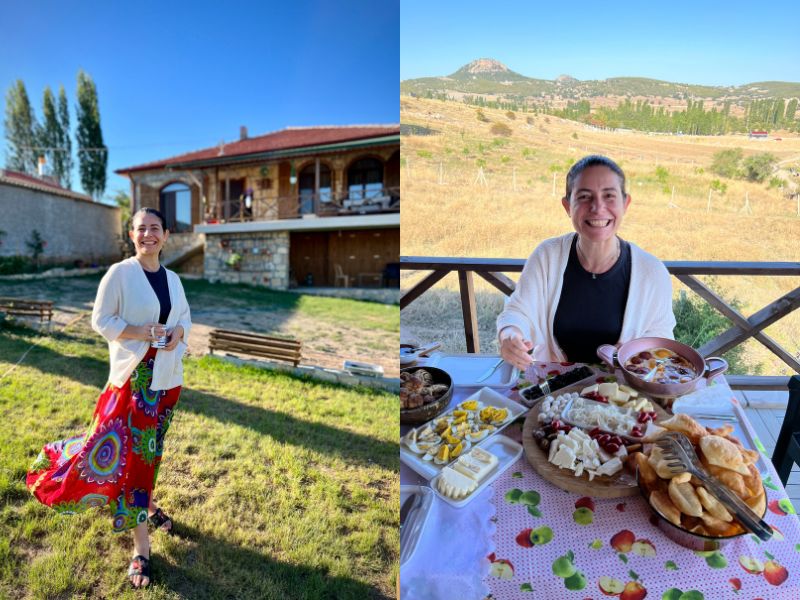
You can stay in the hostel project houses in two villages of Han district. You can get information about prices and availability by contacting the hosts from the Instagram accounts that I have linked below. The houses serve bed and breakfast. Since it is a real village house, you stay in rooms with shared bathrooms.
- Midas Stone House; Located in Büyük Kayıhan Village, the house has two floors in a large garden. The husband and wife, the owners, accompany their guests with pleasant conversations during their stay. I also stayed here. In the photos above and in this link You can see the house.
- Phrygian Yazilikaya Pension: Located in Yazılı Village, the pension has a magnificent location right in front of the Yazılıkaya Monument. The host is a young friend of ours. The photo below was taken from the garden of this house.

Another place you can stay in this region is Çukurca Village, which serves as a boutique hotel. Midas Khan. I can't give too many details as I didn't stay here.
For those who want to tent or caravan camping Passion Cafe's garden is available. Apart from that, there is no regular camping area in this region.
Places to Visit on Eskişehir Phrygia Route, Food & Beverage, Accommodation Map
You can see all the places to visit, eating, drinking and accommodation you read in this article on the map below. You can save this map, and you can navigate comfortably when you go to the region.
Things You Should Know Before Going The Eskişehir Phrygian Route
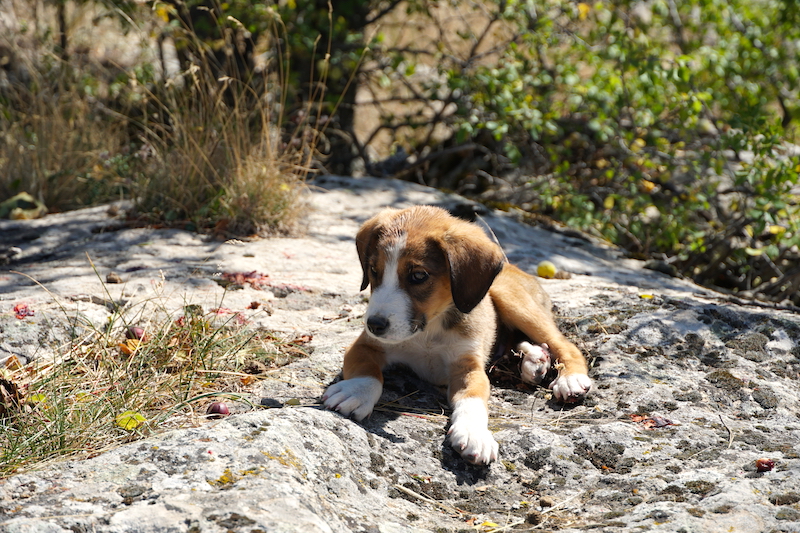
There are some critical points you should know before you go to the Eskişehir Phrygian route, where you will see magnificent valleys, fertile plains, Hittite, Phrygian and Roman artifacts from hundreds of years ago.
- One of the first and biggest problems is the lack of telephone and/or internet connection in many places. In some places, the X operator attracts, while the Y operator does not, in other places it is the opposite. Therefore, if you are going to Phrygia; Download the Google Maps app or Maps.me app offline to your phone so you can use it without internet.
- In the past years, the direction signs were not very good, I saw that they were a little better on my last visit. It would be better if you still save the map I shared above and reference the locations on the offline map.
- As I mentioned in the food and beverage section, there are not many restaurant options. It is even difficult to find grocery stores and markets outside the districts. It may be good to take a runner with you and go on the road.
- The region is not called Mountainous Phrygia for nothing, this is a mountainous-hilly area and the roads are generally one-way, one-way. In some places the roads are bad. If the main connection road to Yazılıkaya Monument is almost finished, transportation will be a little more comfortable when it is finished.
- Let me repeat, the name of the region is Mountainous Phrygia. To see the Phrygian artifacts, you will usually walk on stony paths, so it's a good idea to come with shoes suitable for nature walks. At the very least, choose shoes with non-slip soles.
- If you are going to visit the region in summer, in your bag; Be sure to bring a hat, sunglasses and sunscreen.
- Phrygia is in the Central Anatolia Region, that is, the summers are hot and dry, and the winters are cold and rainy. Since the region is also mountainous, the temperature differences between day and night are quite high, except in summer. It is better to bring thick clothes to avoid freezing, especially at night.
- There are many stray stray dogs around Yazılı Village and Yazılıkaya Monument and they are very neglected. It would be so beneficial if you took food with you when you go, I can't tell you.
